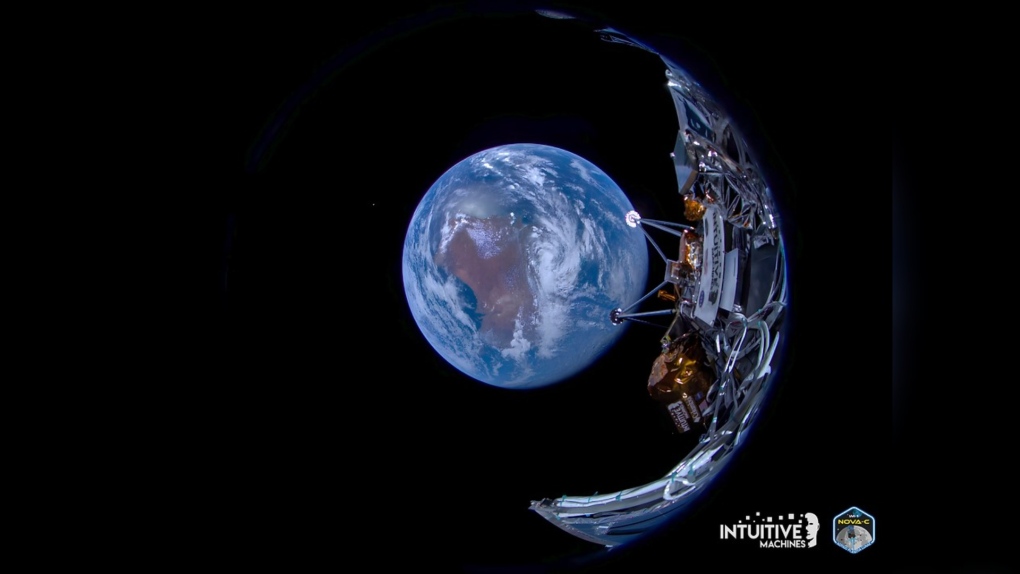A Canadian-made camera is supplying the world with some of the newest images from the moon.
Toronto-based Canadensys manufactured a total of seven cameras that made the long and difficult lunar trip aboard the Odysseus lunar lander.
Those cameras are responsible for several images released this week by Intuitive Machines, the company that made Odysseus and is responsible for its operation in space.
“Most of the images you’ve seen — if not all of them — from Intuitive Machines that sort of look like a round globe have come from our cameras,” said Frank Teti, the general manager of Canadensys Aerospace.
The Odysseus lunar lander touched down on the moon on Feb. 22, and Canadensys has been receiving some images back from the spacecraft when it can make use of the limited connection between the ship and mission control in Houston.
Complications in landing meant the Odysseus spacecraft settled at a roughly 30-degree angle, according to latest estimates from Intuitive Machines CEO Steve Altemus.
That made communications with the spacecraft even harder.
“We watched the launch with great interest, making sure it actually went up,” Teti said. “We watched the landing and now we’re deep into the operations. It’s an extremely exciting time.”
Two of the Canadensys cameras were supplied for Odysseus itself, while the five others were supplied as part of the packages — what the space industry calls payloads — that were carried on board.
Engineers at Canadensys have been taking an active role with the International Lunar Observatory Association (ILOA) payload, according to Teti. They are effectively operating those cameras remotely, by sending scripts to the camera, and taking the data from the machine to the ILOA.
Canadensys cameras captured Odysseus’s landing on the moon. (Intuitive Machines)
That package is a test run for a proposed lunar observatory, the first of its kind that would be stationed on the moon’s surface. Canadensys agreed to a contract with ILOA to manufacture cameras for the test run, and for future missions to the moon.
Officials at NASA and Intuitive Machines feared that Odysseus would meet an early grave due to its awkward landing position, but on Wednesday, they revised estimates of how much battery the spacecraft has left.
Intuitive Machines head Altemus even suggested it might be possible to wake the spacecraft up again in a couple of weeks to send even more data back to earth.
Because testing space cameras in their actual operating conditions is so rare, every bit of feedback that the Canadensys teams get is hugely important, according to Teti.
“We’re closely looking at every part of the operation and the data to see how we can improve it,” he said. “It’s just a phenomenal opportunity to gather invaluable user data.”
Teti said his company started manufacturing the lunar cameras because they couldn’t find any other suppliers for that type of part.
It’s no easy feat.
He explained the cameras have to be strong enough to withstand huge pressures and vibrations during launch, the electromagnetic radiation in space, and wicked surface temperatures on the moon.
His company is just one of two to take part in the Odysseus mission — MDA, a firm based in Brampton, Ont., manufactured landing sensors for the mission.
It’s an exciting moment in the Canadian space industry, according to Rory MacDonald-Gauthier, a blogger who specializes in writing about the cosmos.
He credits the federal government for heavily investing in the industry, and for using those investments to get Canadians bigger roles in upcoming missions.
“But it’s also just Canada really standing up and saying ‘We are here to not only just be part of the exploration in space, but to also lead the way’.”
Canadian astronaut Jeremy Hansen is preparing to fly by the moon on board of the Artemis II mission that is tentatively set to launch next year.




